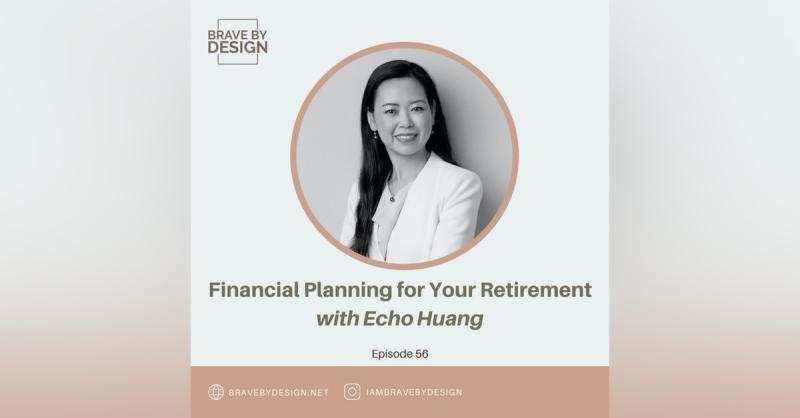The Why, What, and How of a Financially-Fruitful Career Pivot
2020 has been a year of pivoting—business owners pivoting to adapt to the changing market environment, and others having career changes “forced” upon them.
As humans, we prefer the familiar, the predictable, the strategy that gives us the long view. But when it’s not forced upon you, change can be incredible, especially as you begin to feel the urge to make a career change. Many people ignore the nagging feeling because it’s easier to maintain the status quo than embark on a transition that may be overwhelming or stressful. There can be fantastic opportunities and fulfillment waiting on the other side for those who boldly choose a career pivot.
If you’re considering a career change, I advise you to determine your Why, What, and How. Let’s dig in.
The Why
Everyone—business owners and career professionals alike—have moments when they question their career paths. It may be that you’re going through a tough season at work where you feel less than inspired, or it may be that you are truly ready for a change. Before making any big moves, it’s critical to evaluate exactly why you desire a change. Usually, your situation will fall into one of three categories:
- You’re feeling unfulfilled at work.
- You’re feeling unfulfilled in your personal life.
- You’ve reached a growth ceiling in your current position.
If you’re feeling unfulfilled at work, dig in a little deeper and ask yourself a few questions.
- How long have you been feeling unfulfilled?
- Can you put your finger on what it is about your current role that isn’t meeting your needs?
- Are you merely lacking a challenge, or is the work/industry not working for you anymore?
As you answer these questions for yourself, be realistic about whether a career pivot is what you need, and listen to your intuition.
If you’ve reached a growth ceiling, financial or otherwise, a pivot away from your current job or industry can seem quite appealing. However, consider whether something like consulting or freelancing within your current sector could meet your needs before you pivot away from your many years of experience.
Understanding the “why” behind your desire for change is an excellent indicator of your next best move. Make sure you spend some time identifying what it is before you determine your path forward.
The What
Once you decide to pivot, the possibilities may be vast. Whatever change you make will impact your life, not just your career, but also prepare for it. Typically, there are three ways to pivot:
- Seek out a new job.
- Forge an original path forward in your current industry.
- Pursue a new industry.
Choosing to look for a new job could mean within your current company, with competitors, or in a closely-related industry. You might find a better salary, more convenient hours, or coworkers you jive with better than your current team. You might also find a way to utilize better a skill set you’d like to grow. Consider whether this solution can bring you the change you need to feel more connected and inspired by your work.
Sometimes, you may need to reimagine your future path at your current job to solve your work problems. For example, maybe you genuinely love the company you work for, but your middle management role has you feeling burnt out. In a case like this, it may be worth talking to your human resources department about possible opportunities within your company. For example, there may be a project management role that would allow you to utilize your skills and experience but not require managing people. Pivoting within your company in this sort of way can be an excellent solution because it allows you to leave behind the unfulfilling parts of your job while also preserving what you do like about it.
Pivoting to a brand-new industry is an exciting—and sometimes challenging—proposition. On the one hand, you might find that you have a specialization that fits nicely into a new field. On the other hand, you need to be sure that this type of change would accomplish what you’re hoping it will, providing more meaning and enjoyment in your work. The adage, “the grass is greener on the other side,” applies here, making sense to research before making this kind of career change. Talk to people already working within the new industry you’re considering and ask discerning questions. This process will help you ensure that your current work problems don’t follow you to your new job.
The How
Step 1: Choose Your Pivot
You examined your “why,” now you must choose you “what.” Determine what you want to accomplish with your pivot, weigh the pros and cons, then choose your path forward.
Step 2: Don’t Fly Blind
Even if you think you know enough about your chosen pivot, it’s essential to do lots of research. For example, If you’re pursuing a new industry, make sure you know the average salary. If you want to begin freelancing, make sure you understand the tax implications. Force yourself to think with your head instead of your heart so that you know exactly what you’re getting into financially.
Step 3: Set Your Expectations
Any career pivot will mean starting a new chapter in your life, both career-wise and in your personal life. While you might be very excited at the prospect of new day-to-day work, it’s essential to look outside of that. Will there be new demands on your time that will impact your friends and family? Will you have to take a pay cut that changes your ability to vacation with friends or drive a new car every few years? Think about the best- and worst-case scenarios and set reasonable expectations for this new phase of life.
Consider Utilizing a Financial Planner
You are worthy of a career that inspires you and gives your life meaning. However, you must also balance your financial goals against any career pivots. Making a decision too hastily or failing to think through an aspect like retirement planning could hurt you in the long run.
This is why it behooves you to brainstorm any proposed pivot with a financial advisor. I know that this might not be the first person you think of to discuss this with, but expert advice from someone with your unique goals and finances in mind can make all the difference in making your career dreams a reality.
If you’re ready to make a change, please contact me today. I can help you put a financial plan in place that supports your career moves now and into the future, allowing you to build the meaningful life and career you’ve always dreamed of. Schedule a
complimentary 30-minute Discovery Call to learn more about how you can plan for your financially-secure future.













